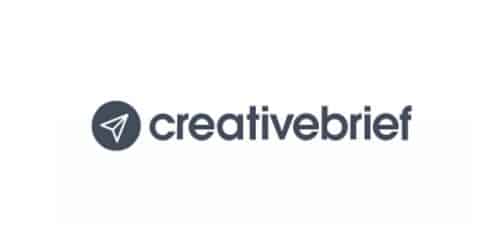A detailed creative brief may not always be required, but most of the time, starting a project without one is like flying blind. The process must be as effective as feasible because many marketing departments produce large amounts of collateral and need to be as nimble as possible in their distribution. And a strong creative brief is the first step in that process. Hence, we will be looking at what it is and how to write a creative brief with an advertising example and a graphic design.
Preamble
A creative project’s strategy is outlined in a document called a creative brief. A creative brief, which is typically created during the project initiation phase, will aid a creative team in better understanding a project from the outset and may be provided to important stakeholders and clients. Despite the fact that not every creative brief is the same, they all have the same basic structure. Also, trying to use one detailed creative brief form for all of your work would be a huge waste of time and effort because certain projects need for more thorough planning than others.
Why you Need a Creative Brief.
The reasons you need a creative brief are as follows:
#1. You Need a Plan.
Of course, you can’t create what you don’t comprehend. You explain your idea, defend its advantages, and make plans for how you will target your audience in a creative brief. When starting a project, a creative brief ensures that everyone is on the same page from the start.
#2. A Well-Written Creative Brief Will Save You Time
Creative briefing involves more than just putting up a document; it also entails using technology to promote full and transparent communication from the outset of the design process.
#3. You’ll Maintain Accountability and Communication.
Your team and your stakeholders will be more anchored if you and they can agree on the project’s scope, deliverables, objectives, persona, and execution. Processes will run more smoothly if boundaries are established and, perhaps most crucially, if trust is established from the beginning.
#4. Requests and Approvals Will Be Processed Faster.
Anticipating challenges is just as important to the creative briefing process as comprehending and coordinating goals. It is preferable to clarify things now rather than in the middle of proofreading.
#5. The Finished Item Will Be of Better Quality.
This is a direct result of establishing precise goals, coordinating them with company goals, and screening expectations in advance. The team is more likely to accomplish their goals, and stay committed, inspired, and proud of their work when everyone’s time is valued and expectations are clear.
How to Write a Creative Brief
Even though a creative brief is only one page, it can be difficult to condense the complete vision for a project into so short of space. This is a strategy on how to write a strong creative brief.
#1. Decide which Parts You Want in Your Brief
As the purpose of creative briefs is to make your job easier, you are ultimately in charge of deciding what should be in your paper. You can add or remove portions, though, as you see fit. The crucial stage in this process is figuring out what information will be most useful to you.
#2. Establish the Background and Goal
Start by briefly describing the client’s issue in one to three sentences. Is a new store going to be opened? Introducing a fresh product? It doesn’t have to be a whole history of the client; just a quick rundown of who they are and what they are doing at the moment. Then, move on to the goal: What is the client attempting to achieve? Even though it seems simple, take the time to consider the client’s motivations beyond the deliverable. You should continue to work on the project with the genuine objective in mind.
#3. Focus on the People You Want to Reach
You need to know your audience in order to produce an effective design or outcome. In the majority of creative briefs, defining the audience is essential. Be detailed about the client’s ideal clients in this section. Make careful to define each audience and rank them in order of priority if your client has several audiences.
#4. Establish Your Message
Now, summarize the main notion that the client wishes to express through this project using what you already know about the client and their objectives. Even though you have a bit more freedom to be inventive in this area, it’s still crucial to keep it succinct and to the point—ideally just one or two sentences.
#5. Setting the Tone
For any kind of creative effort, from graphic design to copywriting, the tone must be established. Create a list of adjectives that best explain how the customer wants to be perceived for this part. These phrases collectively convey the client’s desired overall personality. Strive to keep this to five words or less, and return to this section frequently to make sure your work adheres to the qualities listed.
#6. Strengthen the Methods
The project deliverables are described in this section. Don’t overthink things; it ought to be simple. Create a logo, do you? Creating a three-email sequence for a marketing campaign? creating a welcome video for the business’ website? Simply decide what you will make and give to the client at the project’s conclusion.
#7. Editing, editing, editing
Take another look at your creative brief once you’ve finished all the components. The idea is to keep it as straightforward as you can, but for the first few times, you’ll definitely include way too much information and unimportant nuances. Finally, keep in mind that you and the client will be held accountable for this document throughout the project, so it should be clear, practical, and useful.
Creative Brief Example
Depending on the specific project and your line of work, creative briefs might vary. Check out a few innovative quick examples to use in discovering how this creative brief can differ.
#1. Hush Puppies
This fictitious example of a creative brief for the shoe company Hush Puppies lays out the specifications for a brand awareness campaign in only one page. The target market, the key message, the distinctive advantages of the shoes, and the precise design components that will be used are all identified.
#2. Quaker Oats
This document presents a campaign to assist Quaker Oats in boosting sales, which is a less conventional approach to a creative brief. To explain the issue that the client is trying to address getting busy individuals to take a break and enjoy Quaker Oats this brief mainly depends on data.
#3. Syrguide
This example of a creative brief is clear and straightforward and precisely outlines the precise deliverables for the project: a logo, business cards, and a 30-second motion film. It has all the important information while being clear, uncomplicated, and easy to skim.
Creative Brief in Advertising
A creative brief is a document that almost every marketing, advertising, or design team uses on a regular basis. Nonetheless, the format of each company’s creative brief advertising may differ slightly depending on the requirements of the client or the project. The basic structure for your creative brief is provided below. Together with the information on creative brief advertising that will be pertinent to project stakeholders, it provides the critical steps in the creative process.
#1. Decide on a Name for the Project.
Choosing a project name is the first step in creating a creative brief. Although it may seem straightforward, this is one of the most important aspects of a creative brief. The campaign name will be how many people on your team will learn about a brand-new product or service if you’re creating a campaign around it.
#2. Write about the Company and Briefly Describe the Project’s History.
The firm history is another straightforward yet crucial component. This is non-negotiable if you operate in an agency setup because your team is probably managing multiple client campaigns at once. Nonetheless, you should still include this section if you’re creating a creative brief for an internal project.
#3. Emphasize the Project’s Goal.
The creative brief becomes more detailed at this point. The project’s goal, schedule, and intended audience should all be briefly explained in the project objective. This can be said in one or two sentences, but you can be creative and style it in different parts. It will be useful to emphasize the importance of the project in this section of the creative brief. The goal-related elements will assist you and your team in setting expectations for the project.
#4. Identify the Target Market.
The project’s target audience needs to be identified next. This is the section of your market that the newly launched good or service that would most immediately benefit. By establishing a primary and secondary audience, you can go beyond audience segmentation. Your team will have more freedom to investigate original concepts that might appeal to one group over the other if you do this.
#5. Understand the Market Environment.
The entire team benefits from knowing what your rivals are doing. You can use competition data to develop previously untested concepts, learn from their unsuccessful endeavors, or create a project that enhances a past tactic they have employed.
#6. Prepare the Main Point.
As almost every stakeholder will have a different idea of what it should be, developing the core message might be the most challenging part of the creative brief. Use this easy approach to gain buy-in more quickly. What does it matter if we start this project? ‘What’s the point’ should be your main point. It explains why the people who are most likely to respond to your campaign ought to stop what they’re doing and pay attention.
#7. Choose the Main Advantage for Consumers.
If you’re launching a new product, the target market will probably have access to a number of features and advantages when they choose to buy it.
#8. Choose a Mindset.
Every creative piece that is generated should maintain the tone and voice that define your campaign’s overall attitude. Copywriters can create copy that conveys the desired message in the appropriate setting by selecting a few adjectives that best define the campaign’s attitude.
#9. Choose the Most Effective Call to Action.
Finally, once they have seen your campaign, your audience wants something to do. CTAs have the advantage of not having to be physical activities. A CTA may aim to alter audience opinions and perceptions of your brand without asking them to take any action.
#10. Create the Distribution Schedule.
Make sure your audience really sees the project after it is finished. In addition to any promotional content you intend to produce, list a few channels or platforms where you plan to promote the launch.
#11. Stakeholders Should be Given the Creative Brief.
Share your creative brief with the team you’ll be working with after you’ve completed it. Also, you should share it with the rest of the organization via Slack, emails, or presentations.
Creative Brief Graphic Design
A graphic design project’s specifics are outlined in a creative design brief, a project management document. There is no set format for what should be included, but some common elements are the budget, target audience information, timetables, and a description of the design project. There are many benefits to using a design brief, but we believe that efficiency and direction are the two that matter most. A well-written design brief is essential to producing excellent work, regardless of whether you’re a professional presenting a new design to your customer or a company trying to engage a design agency. You may confirm everything before work begins by presenting your client with an overview plan of the project. Both of you save time and money by doing this.
Who Should Write a Creative Graphic Design Brief?
A design brief must be created whenever a business intends to collaborate with a design firm on a new design project. Any design project should begin with a design brief that outlines the firm, the problem to be solved, and the expectations.
While Creating a Design Brief, What Elements are Necessary?
A creative graphic design brief must be comprehensive, transparent, and contain all the necessary details to provide a thorough overview of the project in order to be effective. The following are vital in creating a creative graphic design brief:
#1. Begin with a Brief Business Overview.
Laying down the company’s essential facts will help you organize your design brief. You can include fundamental information in the overview, such as the company’s size and stage, the sector they operate in, etc.
#2. Describe the Area of Concern
The project scope, also known as the necessary work, should be specified now that the brief includes an overview of the company. The job may involve developing a new logo for the business, working on the graphics for a landing page, or designing the website for an already-existing product.
#3. The Target Audience
Designing for the right audience is just as crucial as designing the right product. Start with fundamental demographic details like age and gender to determine the target audience. Consider providing pertinent information about the audience after that, such as the kinds of stores they frequent or the kinds of movies they enjoy. You might also want to mention where they are most likely to interact with your content, their experience with comparable technologies or goods, or both.
#4. Understand the Competition
You will face competition from other businesses when creating items in practically every situation. It’s a business reality. So, it’s beneficial to have a fundamental awareness of the market environment. Understanding your distinct qualities will help you produce new, original work that will set you apart from the competitors.
#5. Specify your Objectives.
Problems are resolved by good design. A company works with a design agency to complete a project in order to address a current issue. Perhaps they want to increase the number of leads they receive or give their clients a new product.
#6. Make a List of What you Already Possess.
Unless they’re undertaking a total redesign, brands will typically have some assets that designers will employ in the project. It’s possible that they already have a logo design they would like to employ or that a certain page layout was used in an earlier design.
#7. Create a Schedule.
Before starting a new endeavor, it’s important to have realistic expectations. The people you’re dealing with might not be as experienced with the design process.
#8. Set the Budget.
Any project’s budget is a crucial component. The budget must be agreed upon by both parties upfront because it determines the scope of the work that will be done. It’s crucial to break down the budget for each service supplied in the executive summary.
#9. Recap Everything
Lastly, be sure to include an executive summary at the end of the design brief. Even if it could seem a little repetitive, it’s wise to have an overview that covers all of the crucial details mentioned in the brief.
What Is a Good Creative Briefing?
Make sure that what has to be done and by when is crystal apparent before writing a creative brief. It should be as specific as possible regarding the goal, any timeframes, and the product or service in question.
Who Should Write a Creative Brief?
The creative director, designer, project manager, strategist, planner, producer, or account executive could all write a creative brief. The best individual to draft the brief is whoever has the most experience with clients and projects.
What Is the Most Important Part of a Creative Brief?
This is arguably the most significant section of the brief, therefore before you begin the project, you must carefully consider your strategy and objectives.
What Is the Difference between a Brief and a Creative Brief?
How a project team is expected to manage these limits, including what to prioritize and where to make adjustments, will be apparent in a solid project brief. In initiatives that call for creative strategies, such as branding (or rebranding), ad campaigns, and graphic or multimedia design, a creative brief is employed.
What Should Be Avoided in a Creative Brief?
- Defining an excessive number of objectives.
- Not identifying distinct target audiences.
- Using boilerplate or vague descriptions
- Giving your creative brief gaps.
Related Posts
- CREATIVE MARKETING: Top Examples, Strategies, Manager & Ideas
- 50 CREATIVE IDEAS: Free Tips & What You Should Know
- MARKETING MANAGER: Job Description, Salaries & Guide
- Executive Summary: How To Write An Executive Summary For Business Plan & Bank Loans
- Sales Pitch: How To Write Sales Pitch (+Detailed Examples)





